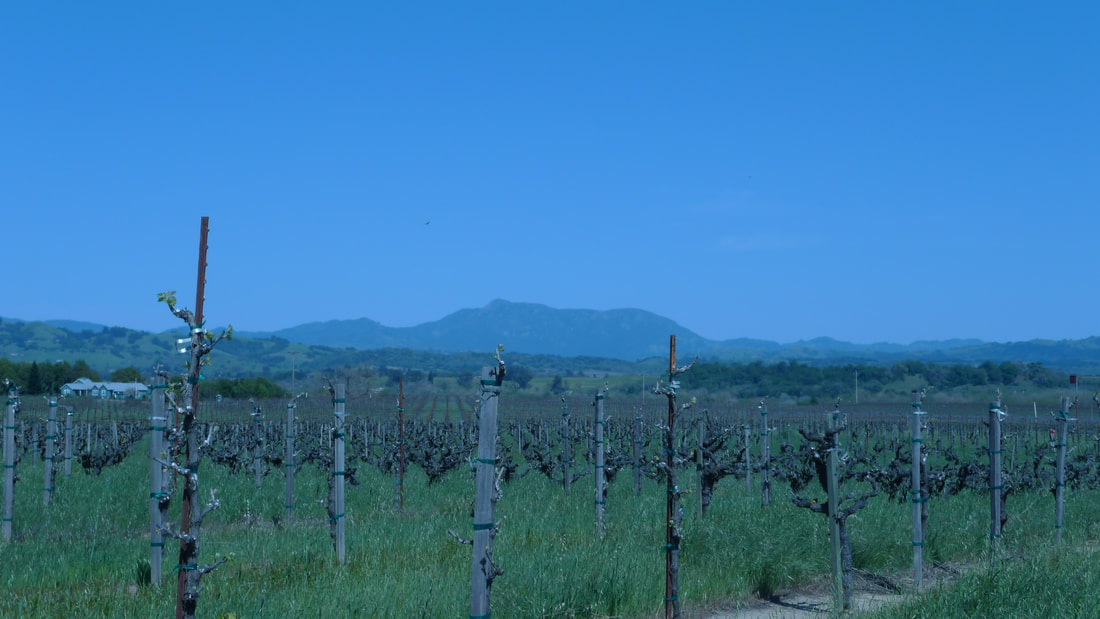 I rocketed from the starting gate with a 6:30-ish pace, blitzing through miles the way I’d done in training. Remember that my triathlon time -- after having ridden for 2.5 hours -- was just shy of 1:24, or 6:30 miles, so something like that seemed like a workable pace for a run twice as long. I felt comfortable and confident striding through miles 1-10. I found people to talk with. I cruised, didn’t think about what was going to happen later in the race. I ran through Mile 15. I ran through Mile 19. The curious thing about the pursuit of running is that, even for a dedicated athlete, after dozens of years, the span of distances one has not run is still infinite, whereas the distances one has run is always finite. (And yes, I do realize the obvious truth of that statement in a mathematical sense, but take it in the plain-language way this deep insight is intended to be read.) So it was at Mile 19 that I crossed the an imaginary line into the vast space of distances I had never run before. And -- because I hate the term “hit the wall” passionately -- I quickly built on that achievement by stepping into the muddy bog of Mile 20. And the expanding swamp of 21, then the Okefenokee-esque 22, followed by a 23 that may or may not have included Fire Swamp quicksand. I slogged through those miles by walking 25-50 meters at each mile marker, massaging my legs, then carrying on at a (relatively) slow 8:30 (or so) pace. So I basically ran 19 6:30s, followed by 4 9:00s. Those 4 miserable death miles added 10 total minutes. Shortly after Mile 24, the end seemed within sight. My mind suddenly and swiftly overpowered the weighty stumps, sloughed off a quartet of accumulated mileage cake, and rolled my pace back up to about 7:00. I must admit that when I rounded that final corner and saw the clock, I was a little disappointed. The Wineglass Marathon ends with a bridge followed by a short straightaway near the Corning Museum of Glass. That turn happens right around the 26-mile mark, and when I made it, the clock had just ticked over 3 hours. I watched it wind up as I emptied my tank across the bridge and finally made the finish. Unlike many runners, I couldn’t have told you -- until just now, when I looked it up -- what my final time was. I’ve had it in my head that it was “about 3:03”, which is, indeed, what it was “about” -- 3:02:40. But there’s no way I’ll remember that, because frankly, Wineglass was just another ridiculously long event that took place in 2002. Qualifying times that year were something like 3:10 or 3:08 (again, I don’t remember...it wasn’t important to me at the time), so I’d soundly managed it. Rebecca finished 20 minutes later. What I do remember post-race was getting an excellent massage and being asked repeatedly if I was going to run Boston. I didn’t know when Boston was. My stock answer was a resounding, “Maybe.” My legs were sore and stiff, but I didn’t expect any long-term damage; this kind of thing was just a weekend jaunt. Three days later, I went out for a short run with some friends at a very low pace on a trail. Within a mile, my knee burned like the center of the sun, and pain shot in every direction. I nearly collapsed. A day after that, another run attempt, and I was similarly debilitated, this time after only a few hundred meters. Two days later, I couldn’t even start a run without feeling like my kneecap was grinding itself into osteotic dust. When I visited my doctor, he suggested I simply stay off it. For two months, I thought of running. I sat in my apartment watching autumn turn to winter and imagining the feeling of pavement and trails underfoot. I vowed to come back for more the next year. And I would. Even so, to this day, Wineglass remains my only timed marathon. Mash out. Spin on.
0 Comments
Leave a Reply. |
AuthorSome runner person. Also perhaps a cyclist & brewing type. But for your purposes, a runner person. Archives
July 2021
Categories |
 RSS Feed
RSS Feed
